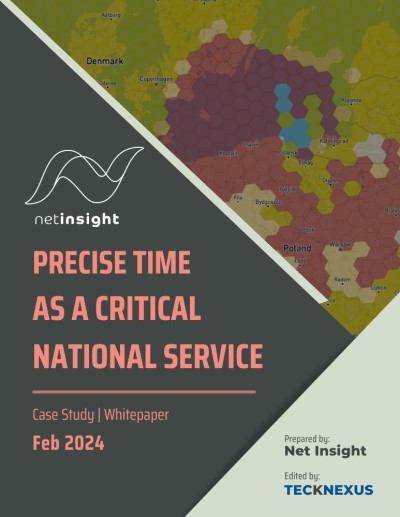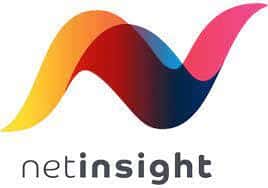Financial institutions are turning to artificial intelligence (AI) to navigate an increasingly complex regulatory landscape, transforming compliance from a burden into a potential competitive advantage amid growing pressure to innovate while maintaining strict regulatory standards.
In the United States alone, banks must comply with multiple regulations including the 9,000-page Dodd-Frank Act, Sarbanes-Oxley Act, Basel Accords, and various anti-money laundering regulations. For European banks operating in the U.S., this regulatory maze becomes even more challenging as they navigate dual jurisdictions and sometimes conflicting requirements.
The traditional approach to regulatory compliance has often led to “Catch-22” type situations, where customers find themselves trapped in unfriendly processes. Banks frequently struggle with conflicting systems designed to solve specific regulatory requirements in one area while creating friction in another. In addition, “Know Your Customer” can put a significant burden on both the financial institution and customer when on boarding.
With this, some financial services companies are starting to rethink their approach to compliance. “Compliance is quickly evolving from a rigid set of rules to a more nuanced approach encompassing consumer duty and ensuring customers receive appropriate and suitable products,” says Al Southall, a challenger bank CTO specialist.
“Appropriate use of AI can speed up the analysis of individual customer needs, align solutions with a Firm’s risk appetite and provide a platform for ongoing analysis of customer risk with Open Banking solutions.”
This evolution comes at a crucial time. Financial institutions face mounting pressure to modernize their services while adhering to increasingly stringent regulatory requirements. The implementation of consumer duty regulations in particular has added new layers of complexity to compliance processes, requiring firms to demonstrate they are delivering good outcomes for retail customers.
AI’s ability to process vast amounts of data and information at speed and with great accuracy is proving transformative in meeting these challenges. Unlike traditional software that might fail with minor changes, AI systems can adapt to variations in forms and processes without requiring reprogramming. This flexibility enables financial institutions to respond more quickly to new compliance requirements while maintaining operational efficiency.
The technology is already delivering substantial returns in specific operational areas. At Benefit Street Partners, automation of tax compliance processes has yielded significant improvements. The company is using a streamlined AI-powered solution designed to pull in all relevant analytics for the relevant tax notice activity into a single screen.
“This ensures that decisions are both more accurate and efficient, saving us 80% in processing time and an equivalent amount in costs,” says Eric Wempen, Former MD Tax at the firm.
According to Jas Dillion, Finance IQ, who led the implementation, “There are dozens of use cases inside each big financial services company right now that could benefit from automation with AI.” Dillion emphasizes that “The pay back is often measured in weeks not years.”
The impact of AI in compliance extends far beyond simple automation. Financial institutions are now deploying sophisticated AI systems across multiple critical functions:
- Fraud Detection and Prevention: AI systems can analyze transaction patterns across millions of data points in real-time, flagging suspicious activities for human review. This capability is particularly valuable in detecting emerging fraud patterns that might escape traditional rule-based systems.
- Network Analysis and Risk Assessment: Modern AI tools can map complex networks of beneficial ownership and relationships between entities, supporting both anti-money laundering compliance and credit risk assessment. This capability has become increasingly important as financial structures become more complex and interconnected globally.
- Customer Due Diligence: AI’s ability to process billions of data points helps streamline customer onboarding while ensuring appropriate duty of care standards are met. This includes analyzing customer behavior patterns to identify potential vulnerabilities or special needs that require additional attention under consumer protection regulations.
- Regulatory Reporting: AI systems can automate the collection and analysis of data required for regulatory reporting, reducing errors, and ensuring consistency across different jurisdictional requirements.
- Training and Staff Development: AI platforms are being used to maintain and update staff knowledge of compliance requirements, providing real-time guidance and scenario-based training that adapts to regulatory changes.
“By assessing data and evaluating patterns and outliers, there is huge potential for AI not only to reduce gruntwork, but to enable risk professionals to add insights and value to enable businesses to grow,” notes Mary O’Connor, Non-Executive Director and Audit Committee Chair. “Compliance and internal audit can move from pure assurance functions to being sustainable business enablers.”
This transformation is particularly relevant as financial institutions face pressure to reduce costs while improving service quality. The ability to automate routine compliance tasks allows highly skilled compliance professionals to focus on complex cases and strategic initiatives that require human judgment and expertise.
The Bank of England and Financial Conduct Authority in their “Artificial Intelligence Public-Private Forum” Report from 2022 looks at the use cases for AI. There are a number of sections that are relevant to using AI for compliance. While there are many important safeguards organizations must take when implementing AI, the report is generally favorable to the implementation of AI in compliance situations.
At the end of the report, an AML and fraud detection use case is considered. The report concludes that, “AI can help address the challenge of synthetic identity fraud, whereby synthetic identities are created from a jigsaw of real data.” Another use case looks at savings and investment advice which falls under the duty of care function. In both cases, the report concludes that AI can play a constructive role in helping financial services companies improve their operations.
However, the adoption of AI in compliance also presents new challenges. Financial institutions must ensure their AI systems remain explainable and auditable, particularly when these systems are making or supporting decisions that affect customer outcomes. The need for human oversight and the ability to demonstrate regulatory compliance means that AI systems must be designed with transparency and accountability in mind. Other factors that need to be considered are data governance and privacy, as well as bias and fairness in the data and models.
The report also made another recommendation, that is sometimes not considered in the application of AI. Organization should practice model risk management which includes considering the lifecycle of the model and continuous monitoring of the model. We have seen in other industries, that models can degrade overtime, and that benchmarks and testing is an ongoing process. Financial services companies should expect to see similar problems, and must plan to ensure their models remain bias free, and working effectively, even as market conditions change.
Looking ahead, the integration of AI into compliance functions is expected to accelerate as technology continues to evolve and regulatory requirements become more complex. Financial institutions that successfully leverage AI for compliance are finding they can not only reduce costs and improve efficiency but also enhance their ability to serve customers while managing risk effectively.
The shift from manual to machine-assisted compliance represents more than just a technological upgrade – it marks a fundamental change in how financial institutions approach regulatory requirements and risk management. As this transformation continues, the role of compliance professionals is evolving from focusing on routine checks and documentation to providing strategic insights and value-added services that support business growth while ensuring regulatory compliance.
Originally published by Thomson Reuters © Thomson Reuters.









































